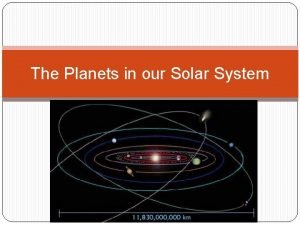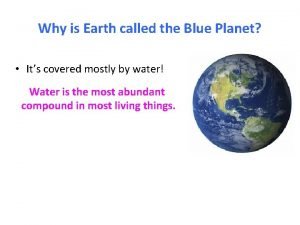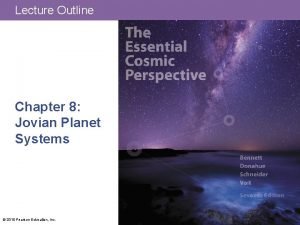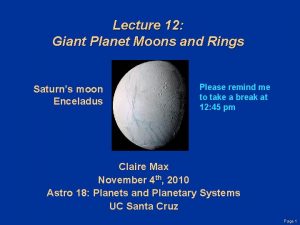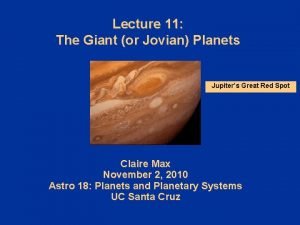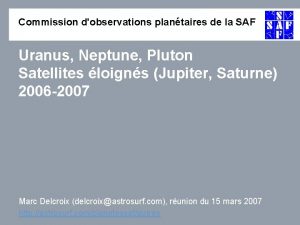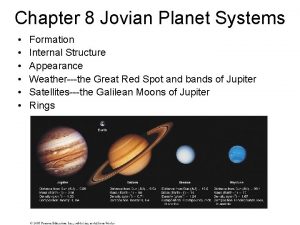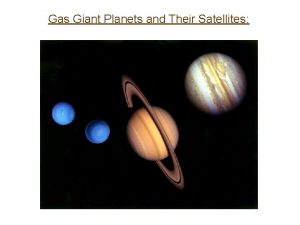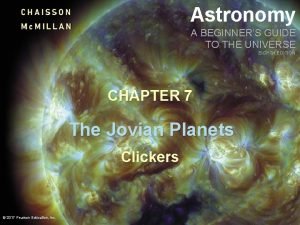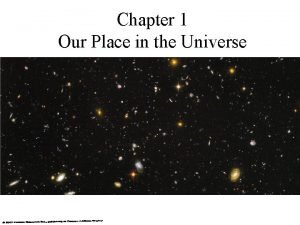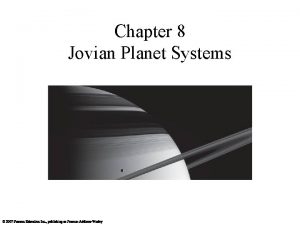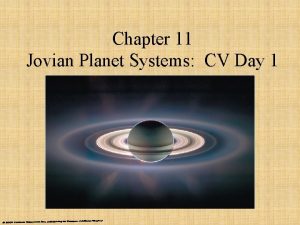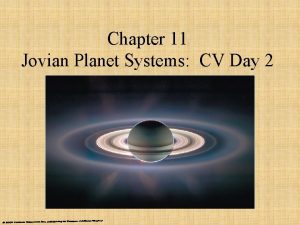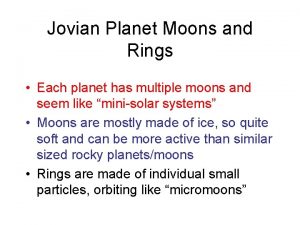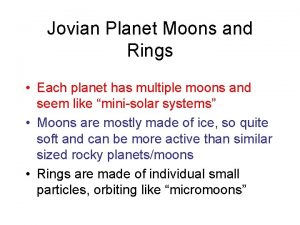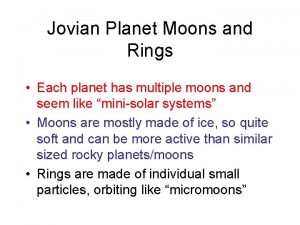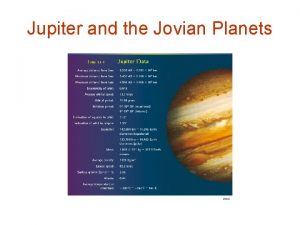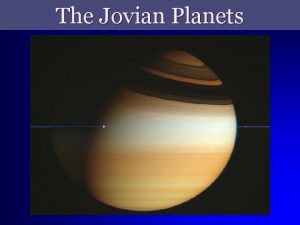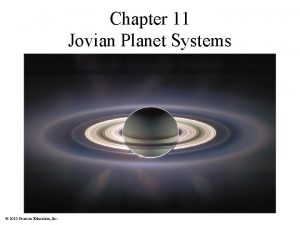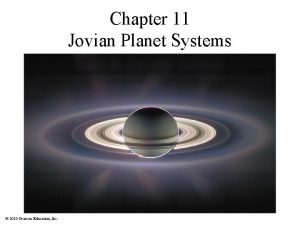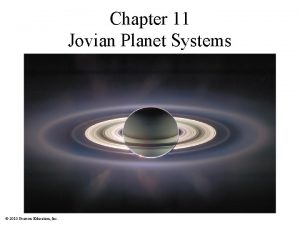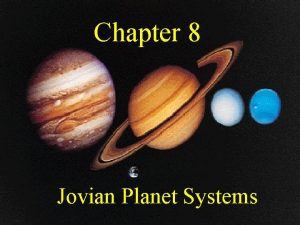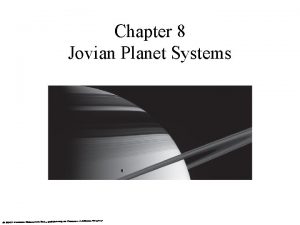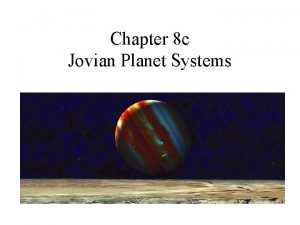Chapter 11 Jovian Planet Systems CV Day 3

















- Slides: 17

Chapter 11 Jovian Planet Systems: CV Day 3

11. 3 Jovian Planet Rings Our goals for learning: • What are Saturn’s rings like? • How do other jovian ring systems compare to Saturn’s? • Why do the jovian planets have rings?

What are Saturn’s rings like?

What are Saturn’s rings like? • They are made up of numerous, tiny individual particles • They orbit over Saturn’s equator • They are very thin

Earth-based view

Spacecraft view of ring gaps

Artist’s conception of close-up

Gap Moons • Some small moons create gaps within rings

Shepherd Moons • Pair of small moons can force particles into a narrow ring

Resonance Gaps • Orbital resonance with a larger moon can also produce a gap

How do other jovian ring systems compare to Saturn’s?

Jovian Ring Systems • All four jovian planets have ring systems • Others have smaller, darker ring particles than Saturn

Why do the jovian planets have rings?

Why do the jovian planets have rings? • They formed from dust created in impacts on moons orbiting those planets How do we know that?

How do we know? • Rings aren’t leftover from planet formation because the particles are too small to have survived this long. • There must be a continuous replacement of tiny particles. • The most likely source is impacts with the jovian moons.

Ring Formation • Jovian planets all have rings because they possess many small moons close-in • Impacts on these moons are random • Saturn’s incredible rings may be an “accident” of our time

What have we learned? • What are Saturn’s rings like? – Made up of countless individual ice particles – Extremely thin with many gaps • How do other jovian ring systems compare to Saturn’s? – Much fainter ring systems with smaller, darker, less numerous particles • Why do the jovian planets have rings? – Ring particles are probably debris from moons
 Jovian planet
Jovian planet Day 1 day 2 day 3 day 4
Day 1 day 2 day 3 day 4 Why earth is called blue planet
Why earth is called blue planet Day 1 day 2 day 817
Day 1 day 2 day 817 The two outer jovians appear bluish in color because
The two outer jovians appear bluish in color because Jupiter's layers
Jupiter's layers Why do jovian planets have rings
Why do jovian planets have rings Jupiter magnetosphere
Jupiter magnetosphere How are terrestrial planets different from jovian planets?
How are terrestrial planets different from jovian planets? Neptune jovian
Neptune jovian Jovian
Jovian Jovian gas giant
Jovian gas giant Saturn is noticeably oblate because
Saturn is noticeably oblate because Sit on the planet chapter 1
Sit on the planet chapter 1 Family portal schoolmax
Family portal schoolmax Ocean apart day after day
Ocean apart day after day Day to day maintenance
Day to day maintenance As your room gets messier day by day, entropy is
As your room gets messier day by day, entropy is
